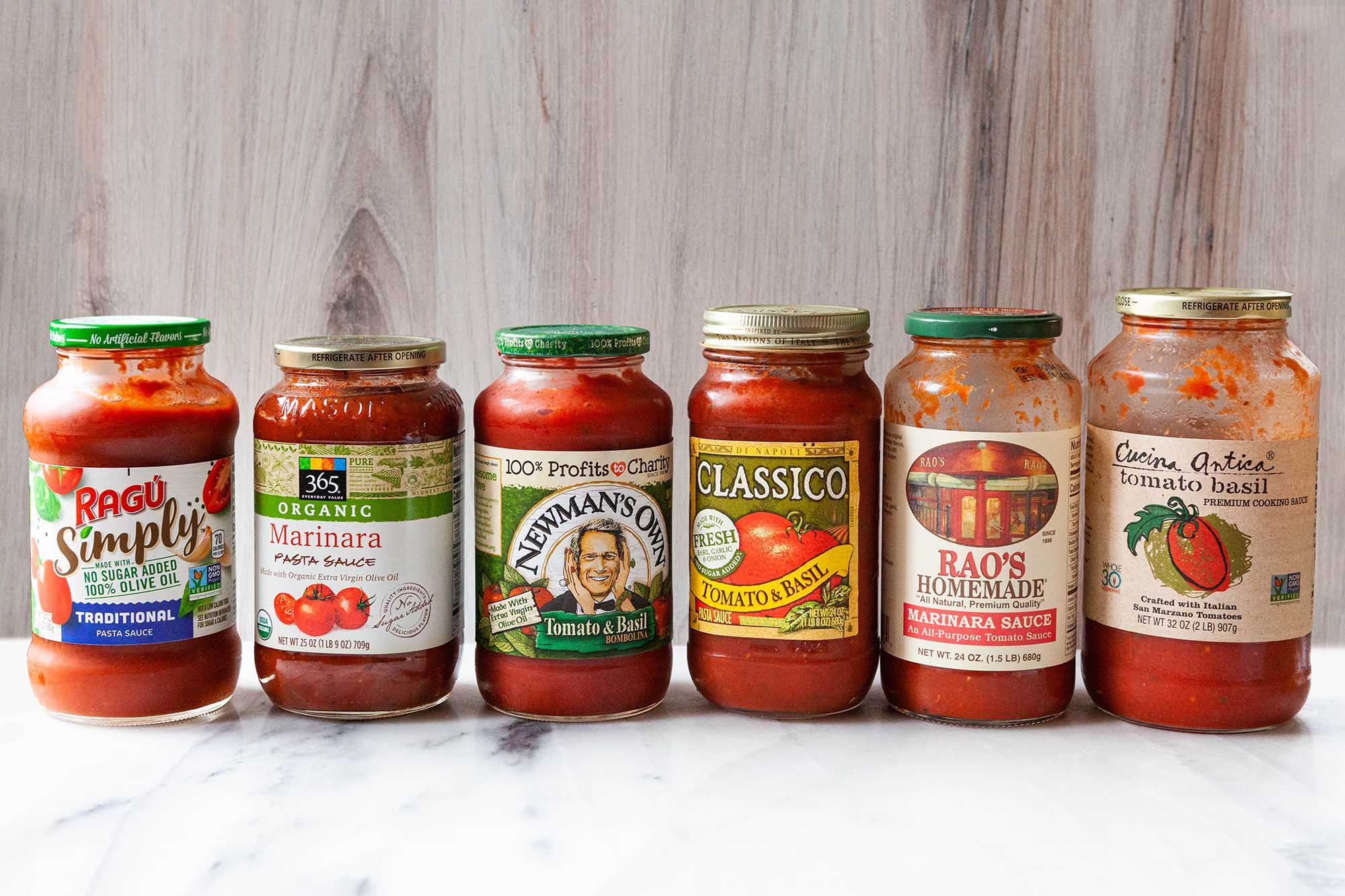

Articles
How To Store Pasta Sauce Long Term
Modified: February 24, 2024
Learn how to store pasta sauce long term with these helpful articles. Find tips and tricks for preserving your homemade sauce for future use.
(Many of the links in this article redirect to a specific reviewed product. Your purchase of these products through affiliate links helps to generate commission for Storables.com, at no extra cost. Learn more)
Introduction
Pasta sauce is a versatile and delicious condiment that can elevate any pasta dish. Whether you’ve made a large batch of homemade pasta sauce or have leftover store-bought sauce, knowing how to store it properly can ensure that it remains fresh and flavorful for an extended period of time. In this article, we will explore various methods and containers for storing pasta sauce long term.
When it comes to storing pasta sauce, there are a few key factors to consider. The container you choose, the preparation steps you take, and the storage conditions can all impact the shelf life and taste of the sauce. By following the right techniques, you can preserve your pasta sauce for several months, making meal planning and preparation so much easier.
Whether you prefer freezing, canning, or storing in the refrigerator, we will cover the steps you need to take for each method. So let’s dive in and discover how to store pasta sauce long term!
Key Takeaways:
- Properly storing pasta sauce long term involves choosing the right containers, preparing the sauce, and labeling it accurately. Freezing, canning, and vacuum sealing are effective methods to preserve the sauce’s flavor and extend its shelf life.
- When reheating stored pasta sauce, ensure proper thawing and use within recommended timeframes. Customize the sauce to your liking and enjoy it in various dishes, from pasta to pizza. Remember to store any leftovers safely for future use.
Read more: How To Store Pasta Long Term
Choosing the Right Containers for Storing Pasta Sauce
When it comes to storing pasta sauce long term, choosing the right containers is essential. The container you select should be able to withstand both freezing and heating temperatures, as well as being airtight to prevent any leakage or contamination. Here are some container options to consider:
- Plastic Freezer Bags: Freezer bags are a popular choice for storing pasta sauce. They are convenient, space-saving, and allow for easy portioning. Look for sturdy, BPA-free bags that are specifically designed for freezer use.
- Glass Jars: Glass jars are a classic and eco-friendly option for storing pasta sauce. Make sure the jars are specifically designed for canning or preserving and have an airtight seal. Mason jars with metal lids work well for this purpose.
- Plastic Containers: If you prefer a reusable option, plastic containers with tight-fitting lids are a good choice. Make sure the containers are made from food-grade plastic and can withstand both freezing and reheating.
When choosing your containers, consider the quantity of sauce you plan to store and the availability of space in your freezer or pantry. It’s also a good idea to select containers that are stackable to maximize storage efficiency. Remember to thoroughly clean and sterilize the containers before using them to store your pasta sauce.
Preparing the Pasta Sauce for Long-Term Storage
Before you store your pasta sauce long term, it’s important to properly prepare it to ensure optimal freshness and flavor. Here are some steps you should follow:
- Cook the Sauce: If you’re using homemade pasta sauce, ensure that it’s fully cooked before transferring it to storage containers. This helps to eliminate any potential bacteria and extends the sauce’s shelf life.
- Cool the Sauce: Allow the pasta sauce to cool completely before storing it. Hot sauce can generate condensation, which can lead to ice crystals and freezer burn when frozen. Place the sauce in the refrigerator for a few hours or overnight to cool down.
- Seasoning and Consistency: Adjust the seasoning and consistency of the pasta sauce before storing it. Taste the sauce and add any additional herbs, spices, or salt as desired. You can also adjust the thickness by adding a little water or tomato paste.
- Remove Air Bubbles: To prevent any potential spoilage, remove any air bubbles from the sauce before sealing the containers. This can be done by gently tapping the container or using a spoon to release trapped air pockets.
- Divide into Portions: If you’ve made a large batch of pasta sauce, consider dividing it into smaller portions before storing. This allows for easier meal planning, as you can defrost only the amount needed for a particular meal.
By following these preparation steps, you can ensure that your pasta sauce is ready for long-term storage and will maintain its quality and taste.
Cooling and Labeling the Pasta Sauce
Once you have prepared your pasta sauce for long-term storage, the next step is to properly cool and label the sauce. These steps are crucial for maintaining the quality and organization of your stored sauce.
Cooling the Sauce:
After cooking the pasta sauce, allow it to cool completely before transferring it to storage containers. Cooling the sauce is important for preventing bacterial growth and maintaining its flavor. Place the sauce in the refrigerator for a few hours or overnight until it is thoroughly cooled. Avoid leaving the sauce at room temperature for extended periods as this increases the risk of spoilage.
Labeling the Sauce:
Labeling your pasta sauce containers is essential for keeping track of the storage date and contents. Use adhesive labels or masking tape, and clearly write down the date of storage and what type of sauce is inside. This will help you track how long the sauce has been stored and ensure that you use it before it reaches its expiration date. Additionally, labeling will prevent any confusion if you have multiple types of pasta sauces stored.
If you prefer a more organized approach, you can use a marker to write directly on the container or print out custom labels to attach. Whichever method you choose, make sure the labels are securely attached and can withstand freezer or refrigerator conditions.
By following these steps, you can ensure that your pasta sauce is cooled properly and labeled accurately, making it easier to manage and use in the future.
Freezing Pasta Sauce for Long-Term Storage
Freezing is one of the most common and effective methods for long-term storage of pasta sauce. When done correctly, freezing preserves the flavor and texture of the sauce for several months. Here are the steps to freeze pasta sauce:
- Choose Freezer-Safe Containers: Select containers that are specifically designed for freezer use. Plastic freezer bags, plastic containers, or glass jars with wide mouths are all suitable options.
- Portion the Sauce: Divide the pasta sauce into meal-sized portions that can be easily thawed and used whenever needed. This allows for uncomplicated meal planning and minimizes waste.
- Fill the Containers: Pour the cooled pasta sauce into the chosen freezer-safe containers. Leave some headspace at the top to allow for expansion when the sauce freezes.
- Remove Air and Seal: If using plastic bags, squeeze out any excess air before sealing them. If using containers or jars, make sure to seal them tightly to prevent air from entering.
- Label and Date: Label each container or bag with the name of the sauce and the date of freezing. This will help you keep track of how long the sauce has been stored.
- Store in the Freezer: Place the sealed containers or bags in the freezer, ensuring they are placed in an upright position to prevent leakage. Try to keep the sauce in a single layer initially to allow for efficient freezing.
- Organize and Stack: Once the sauce is frozen solid, you can organize and stack the containers more efficiently to save space in the freezer.
When you’re ready to use the frozen pasta sauce, simply remove the desired portion from the freezer and thaw it in the refrigerator overnight. Alternatively, you can thaw it in the microwave or on the stovetop over low heat. Thawed pasta sauce should be used within 3 to 4 days and never refrozen.
By following these steps, you can freeze your pasta sauce properly and enjoy it for months to come.
Store pasta sauce long term by freezing it in airtight containers or freezer bags. Make sure to leave some room for expansion, and label with the date for easy tracking.
Read more: How To Store Dry Pasta Long Term
Canning Pasta Sauce for Long-Term Storage
Canning is a popular method for preserving pasta sauce for long-term storage. It involves sealing the sauce in airtight jars, which helps to maintain its freshness and flavor. Here’s how to can pasta sauce:
- Gather Supplies: You’ll need canning jars with lids and bands, a large pot for boiling, a canning rack or jar lifter, a funnel, and a ladle. Make sure all your equipment is clean and in good condition.
- Prepare the Sauce: Cook the pasta sauce and ensure it’s hot and ready for canning. Keep it simmering while you prepare the jars.
- Sterilize the Jars: Place the canning jars and lids in a large pot filled with water. Bring the water to a boil and let it simmer for about 10 minutes to sterilize the jars. Remove them from the water using tongs or a jar lifter.
- Fill the Jars: Place a funnel on top of each jar and ladle the hot pasta sauce into the jars, leaving about 1/2 inch of headspace at the top. Remove any air bubbles by gently tapping the jars or using a utensil. Ensure the rims of the jars are clean and free from any sauce residue.
- Seal the Jars: Wipe the rims of the jars with a clean, damp cloth to remove any sauce or debris. Place the lids on the jars, and screw on the bands until they are fingertip tight – not too loose or too tight.
- Process the Jars: Place the filled and sealed jars into a large pot or canner with a canning rack or kitchen towel on the bottom. Fill the pot with enough water to cover the jars by at least 1 inch. Bring the water to a gentle boil and process the jars for the recommended time.
- Remove and Cool: After the processing time is complete, carefully remove the jars from the pot using tongs or a jar lifter. Place them on a clean kitchen towel or cooling rack and let them cool undisturbed for 12 to 24 hours.
- Check the Seals: After the jars have cooled, check the seals by pressing down on the lids. If they do not flex or make a popping sound, they are properly sealed. Any unsealed jars should be refrigerated and used within a few days.
- Label and Store: Label each jar with the date and contents. Store the sealed jars in a cool, dark place such as a pantry or cupboard. Properly canned pasta sauce can last for up to 1 year.
When you’re ready to use the canned pasta sauce, simply open a jar, heat it on the stovetop, and serve with your favorite pasta. Enjoy the taste of your homemade sauce all year round!
Storing Pasta Sauce in Vacuum Sealed Bags
Another excellent method for storing pasta sauce long term is using vacuum sealed bags. Vacuum sealing removes the air from the bags, creating an airtight environment that preserves the flavor and extends the shelf life of the sauce. Here’s how to store pasta sauce in vacuum sealed bags:
- Prepare the Sauce: Cook the pasta sauce and ensure it’s fully cooked and seasoned to your liking.
- Cool the Sauce: Allow the sauce to cool completely before transferring it to the vacuum sealed bags. Placing hot sauce in the bags can cause condensation, compromising the quality of the sauce.
- Portion the Sauce: Divide the cooled pasta sauce into smaller portions suitable for one-time use. This will allow for convenient meal planning and easy defrosting.
- Seal the Bags: Place one portion of sauce into each vacuum sealed bag. Use the vacuum sealer machine according to the manufacturer’s instructions to remove the air and seal the bags tightly.
- Label the Bags: Use a marker or adhesive label to write down the date and contents on each bag. This will help you keep track of the storage time and easily identify the sauce.
- Freeze the Bags: Place the sealed bags of pasta sauce in the freezer. Make sure to lay them flat in a single layer initially to allow for efficient freezing. Once they are frozen, you can stack them for more efficient storage.
- Thawing and Using the Sauce: When you’re ready to use the pasta sauce, simply remove the desired portion from the freezer and thaw it in the refrigerator overnight. You can then heat it on the stovetop or in the microwave and use it in your favorite pasta dishes.
- Storage Duration: Properly sealed and frozen pasta sauce can last for several months. However, it’s best to consume the sauce within 3 to 4 months for optimal flavor and quality.
By vacuum sealing your pasta sauce, you can enjoy the convenience of portioned servings and prolong the shelf life of your sauce. It’s a great option for preserving homemade sauce or excess store-bought sauce for future use.
Storing Pasta Sauce in Glass Jars
Using glass jars is a classic and reliable method for storing pasta sauce long term. Glass jars provide an airtight environment and are ideal for preserving the flavor and freshness of the sauce. Here’s how to store pasta sauce in glass jars:
- Select the Right Jars: Choose glass jars that are specifically designed for canning or preserving. Mason jars with metal lids are a popular choice, but any glass jars with airtight seals will work.
- Cook and Cool the Sauce: Prepare your pasta sauce and ensure it’s fully cooked. Allow the sauce to cool completely before transferring it to the glass jars. This prevents the sauce from spoiling and helps maintain its quality.
- Sanitize the Jars: Before using the jars, sanitize them by placing them in a large pot filled with boiling water. Let the jars simmer for about 10 minutes, then carefully remove them using tongs or a jar lifter.
- Fill the Jars: Place a funnel on top of each jar and carefully ladle the cooled pasta sauce into the jars. Leave about 1/2 inch of headspace at the top to allow for expansion during freezing or canning.
- Seal the Jars: Wipe the rims of the jars clean to ensure a proper seal. Place the metal lids on top of the jars and screw on the bands until they are fingertip tight – not too loose or too tight.
- Process the Jars (Optional): If you prefer to can the pasta sauce, place the sealed jars in a large pot with a canning rack or kitchen towel on the bottom. Fill the pot with enough water to cover the jars by at least 1 inch. Process the jars in a boiling water bath for the recommended time.
- Cool and Test the Seals: After processing or simply sealing the jars, let them cool undisturbed for 12 to 24 hours. Check the seals by pressing down on the lids. If they do not flex or make a popping sound, they are properly sealed. Any unsealed jars should be refrigerated and used within a few days.
- Label the Jars: Use a marker or adhesive label to date and label each jar with the contents. This will help you keep track of the storage time and easily identify the sauce.
- Store in a Cool, Dark Place: Place the sealed jars of pasta sauce in a cool, dark pantry or cupboard. Properly sealed and stored pasta sauce can last for up to 1 year.
When you’re ready to use the pasta sauce, simply open a jar, heat it on the stovetop, and enjoy it with your favorite pasta dishes. Using glass jars allows you to store your homemade or store-bought pasta sauce conveniently and with confidence.
Properly Storing Pasta Sauce in the Refrigerator
If you plan to use your pasta sauce within a shorter time frame, storing it in the refrigerator is a practical option. However, it’s important to store it properly to maintain its freshness and prevent any spoilage. Here’s how to properly store pasta sauce in the refrigerator:
- Cool Down the Sauce: After cooking the pasta sauce, let it cool down to room temperature before transferring it to the refrigerator. Placing hot sauce in the refrigerator can raise its internal temperature and affect the overall quality.
- Choose a Suitable Container: Select an airtight container that is large enough to hold the desired amount of sauce. Glass or plastic containers with tight-fitting lids work well for this purpose.
- Transfer and Store: Pour the cooled pasta sauce into the chosen container and seal it tightly. Make sure there are no visible gaps or openings that could allow air or bacteria to enter the sauce.
- Label the Container: Use a marker or adhesive label to write down the date of storage on the container. This will help you keep track of its freshness and avoid using it past the recommended storage time.
- Place in the Refrigerator: Find a suitable spot in the refrigerator for storing the pasta sauce. Ideally, it should be placed on a shelf near the back, as this is the coolest part of the refrigerator and will help maintain a consistent temperature.
- Use Within the Recommended Time: Cooked pasta sauce can be safely stored in the refrigerator for 3-5 days. It’s important to consume the sauce within this timeframe to ensure its quality and prevent any risk of foodborne illness.
- Check for Signs of Spoilage: Before using the refrigerated pasta sauce, visually inspect it for any signs of spoilage, such as mold growth, off odors, or unusual texture. If you notice any of these indications, discard the sauce immediately.
By following these guidelines, you can properly store your pasta sauce in the refrigerator, ensuring its freshness and safety for a limited time. It’s always a good practice to use any leftovers or refrigerated sauce within the recommended timeframe to enjoy its best taste and quality.
Read more: How To Store Homemade Pasta Sauce
Reheating and Using Stored Pasta Sauce
Once you’ve stored pasta sauce using the appropriate method, whether it’s frozen, canned, or refrigerated, you may be wondering how to reheat and use it effectively. Here are some tips for reheating and using stored pasta sauce:
- Thawing Frozen Pasta Sauce: If you’ve stored pasta sauce in the freezer, you’ll need to thaw it before reheating. Transfer the frozen sauce from the freezer to the refrigerator and let it thaw overnight. Alternatively, you can thaw it in the microwave using the defrost setting.
- Reheating Pasta Sauce: To reheat pasta sauce, you can use either the stovetop or the microwave. On the stovetop, heat the sauce slowly over low to medium heat, stirring occasionally to ensure even heating. In the microwave, place the sauce in a microwave-safe container and heat in short intervals, stirring in between until it reaches the desired temperature.
- Using Canned or Refrigerated Pasta Sauce: If you’ve stored pasta sauce in cans or in the refrigerator, you can use it directly without thawing or reheating. Simply open the can or container, pour the desired amount of sauce into a pan, and heat it on the stovetop until warmed through.
- Customize the Sauce: Stored pasta sauce provides a versatile base that you can customize according to your preferences. You can add additional ingredients such as cooked vegetables, herbs, spices, or meat to enhance the flavor and create a hearty sauce.
- Serving Suggestions: Use your reheated pasta sauce in a variety of dishes. Serve it over cooked pasta such as spaghetti, fettuccine, or penne. Use it as a topping for homemade pizza. Use it as a filling for lasagna or stuffed shells. The options are endless!
- Storing Leftovers: If you have leftover pasta sauce after reheating, store it properly in airtight containers in the refrigerator. Use it within 3-5 days to maintain its quality and taste.
Remember, it’s important to reheat and use stored pasta sauce safely and within the recommended timeframe. It’s always a good practice to follow proper food handling and storage guidelines to ensure the safety and enjoyment of your pasta sauce.
Frequently Asked Questions about How To Store Pasta Sauce Long Term
Was this page helpful?
At Storables.com, we guarantee accurate and reliable information. Our content, validated by Expert Board Contributors, is crafted following stringent Editorial Policies. We're committed to providing you with well-researched, expert-backed insights for all your informational needs.
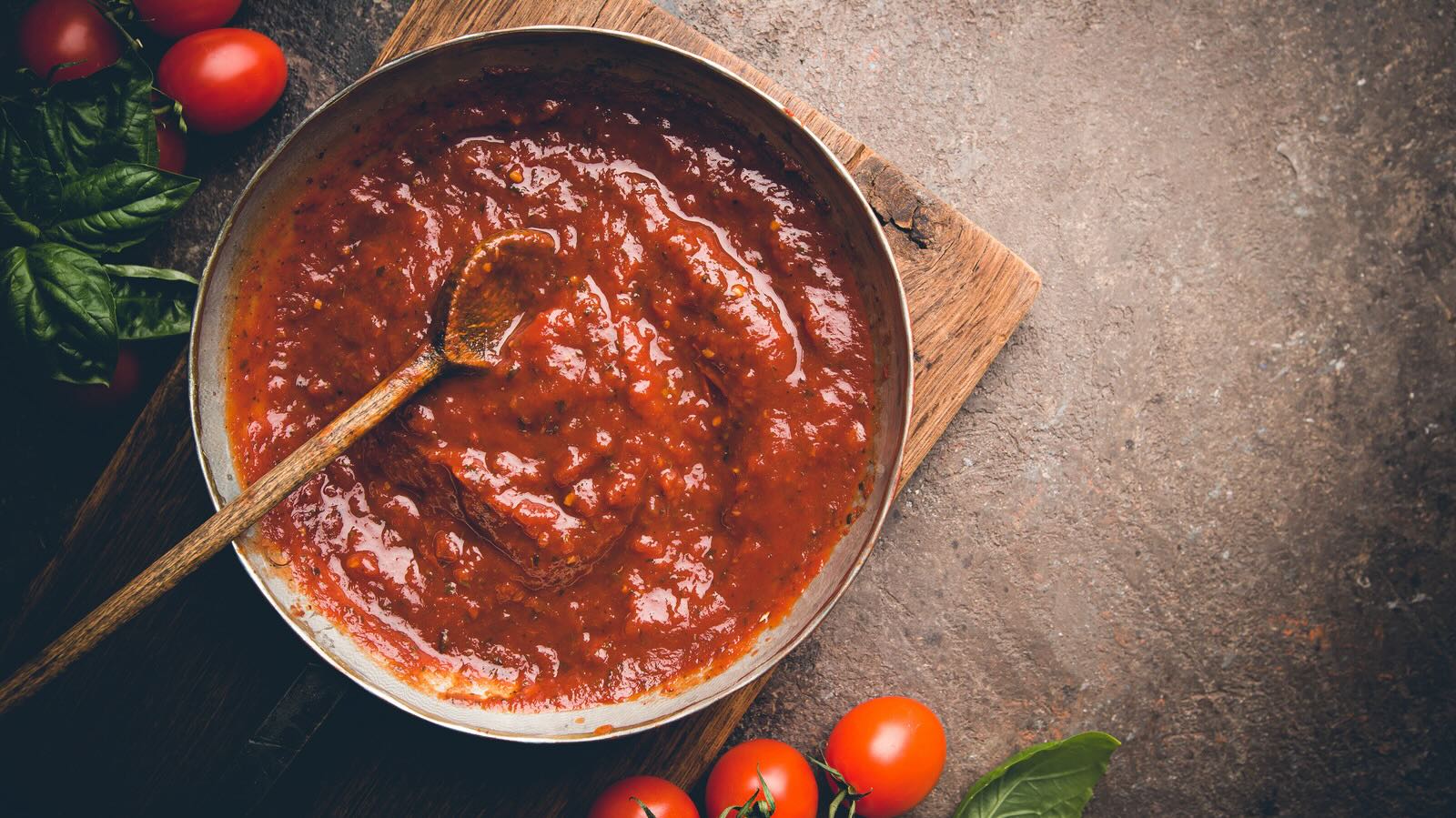
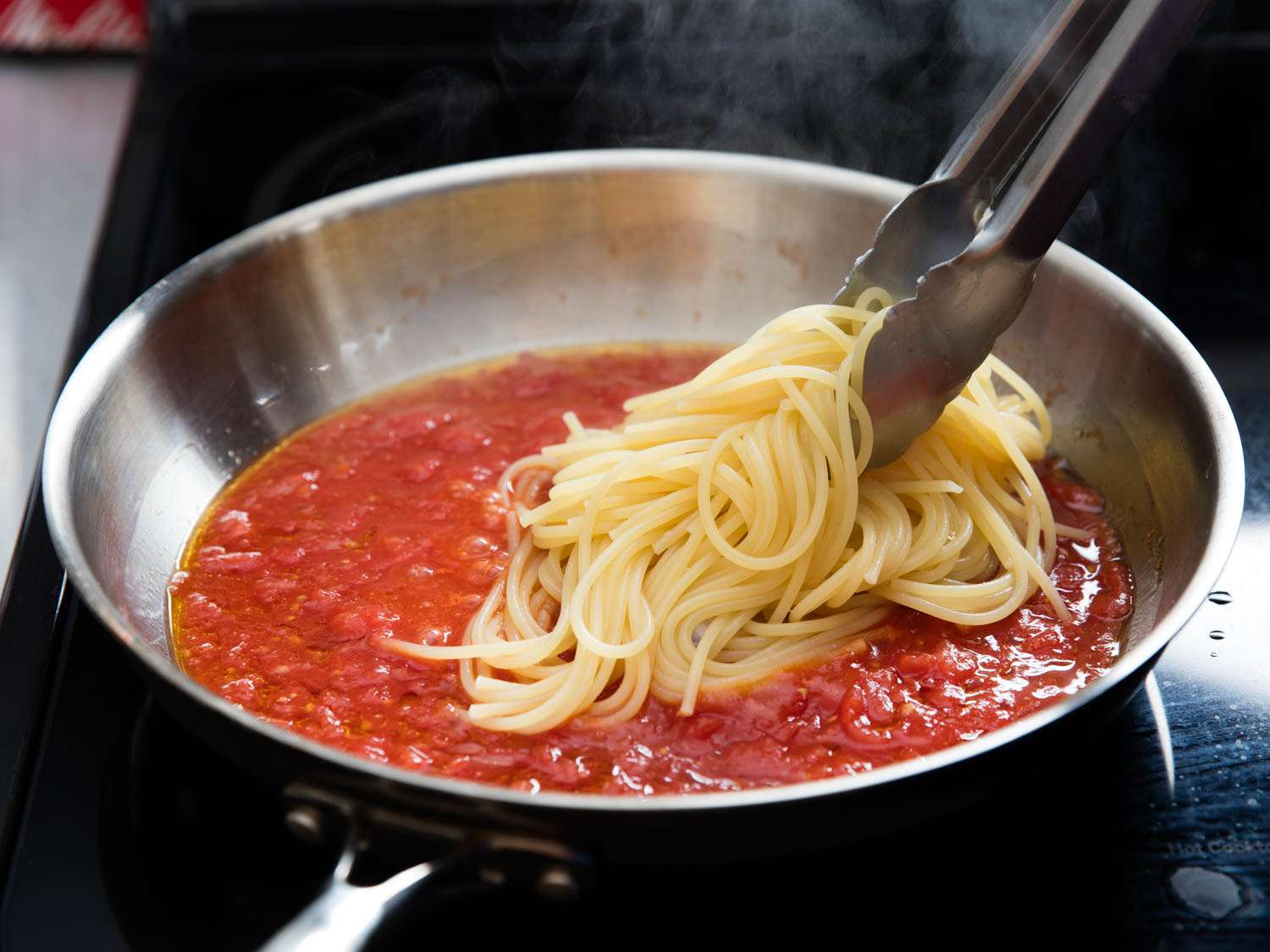
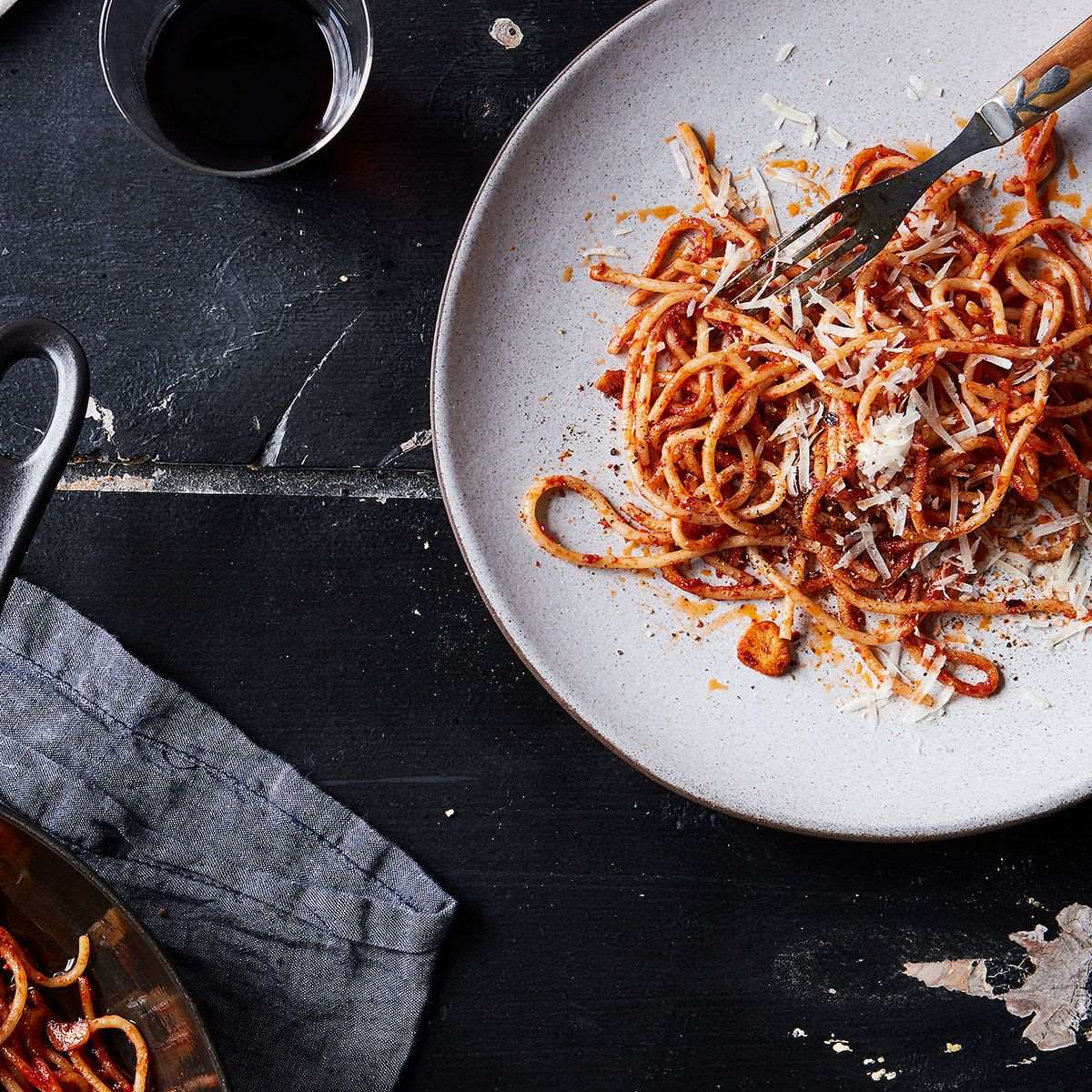
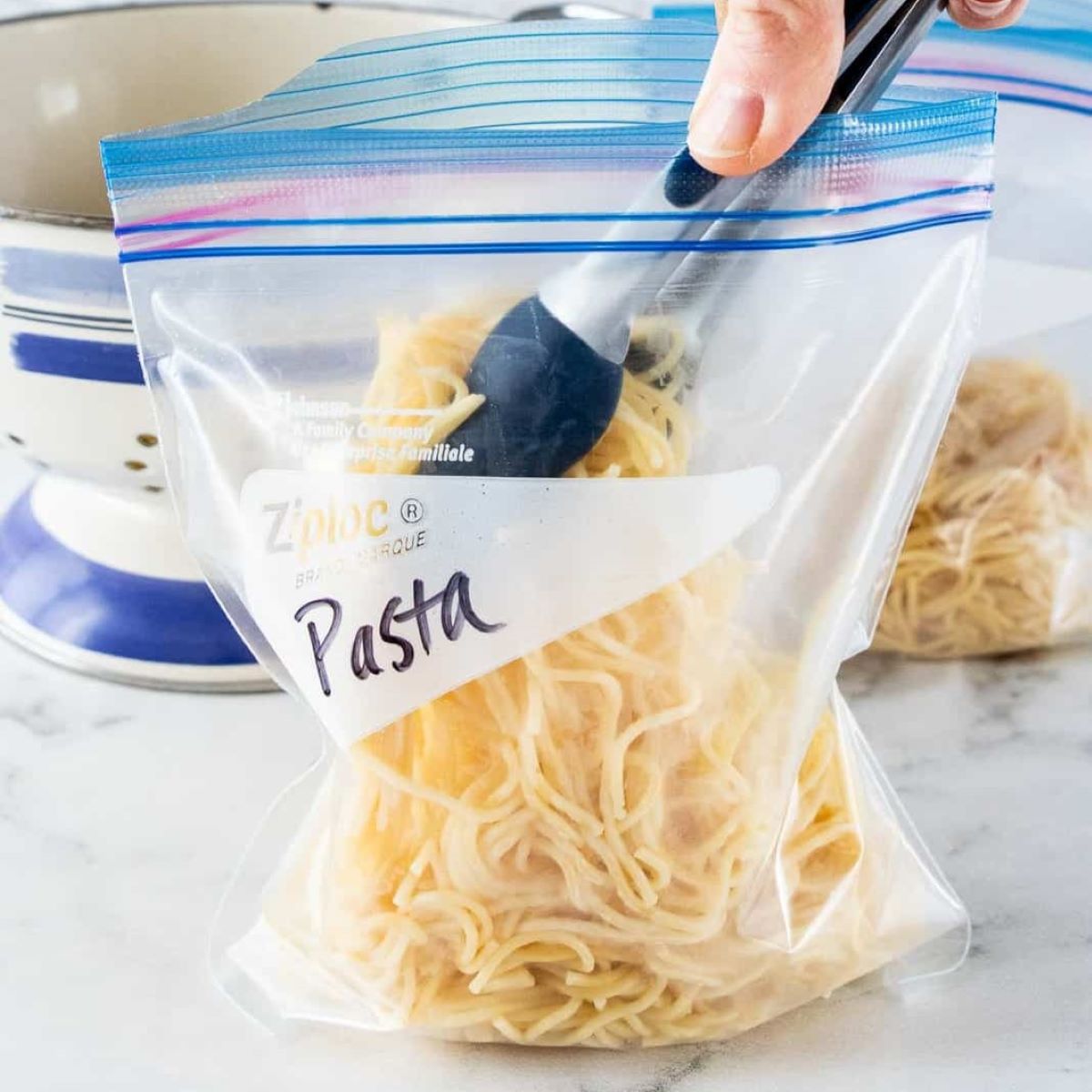
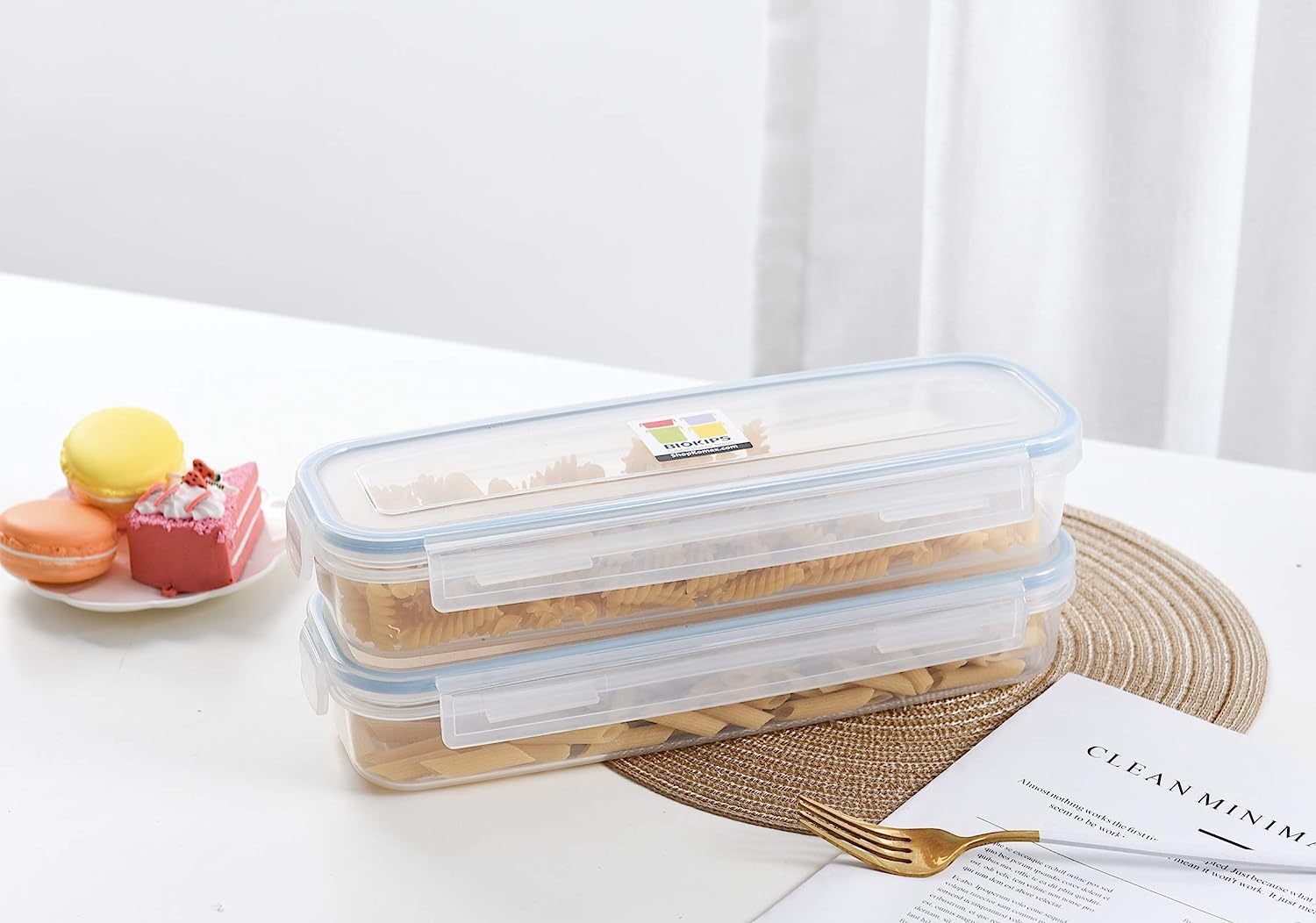









0 thoughts on “How To Store Pasta Sauce Long Term”